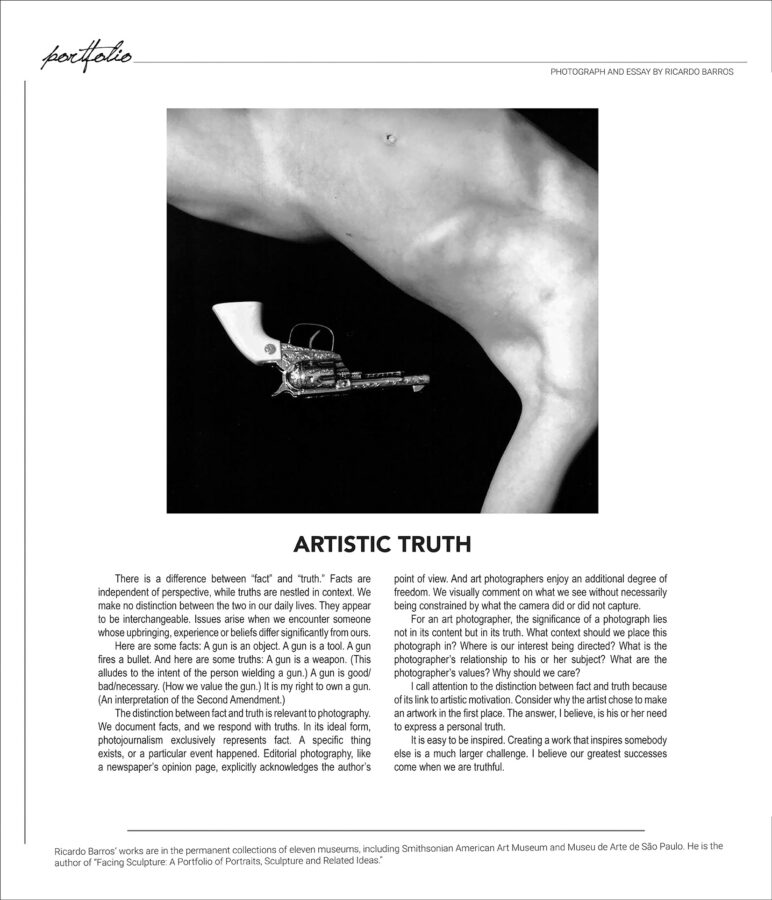Artistic Truth
There is a difference between “fact” and “truth.” Facts are independent of perspective, while truths are nestled in context. We make no distinction between the two in our daily lives. They appear to be interchangeable. Issues arise when we encounter someone whose upbringing, experience or beliefs differ significantly from ours.
Here are some facts: A gun is an object. A gun is a tool. A gun fires a bullet. And here are some truths: A gun is a weapon. (This alludes to the intent of the person wielding a gun.) A gun is good/bad/necessary. (How we value the gun.) It is my right to own a gun. (An interpretation of the Second Amendment.)
The distinction between fact and truth is relevant to photography. We document facts, and we respond with truths. In its ideal form, photojournalism exclusively represents fact. A specific thing exists, or a particular event happened. Editorial photography, like a newspaper’s opinion page, explicitly acknowledges the author’s point of view. And art photographers enjoy an additional degree of freedom. We visually comment on what we see without necessarily being constrained by what the camera did or did not capture.
For an art photographer, the significance of a photograph lies not in its content but in its truth. What context should we place this photograph in? Where is our interest being directed? What is the photographer’s relationship to his or her subject? What are the photographer’s values? Why should we care?
I call attention to the distinction between fact and truth because of its link to artistic motivation. Consider why the artist chose to make an artwork in the first place. The answer, I believe, is his or her need to express a personal truth.
It is easy to be inspired. Creating a work that inspires somebody else is a much larger challenge. I believe our greatest successes come when we are truthful.

